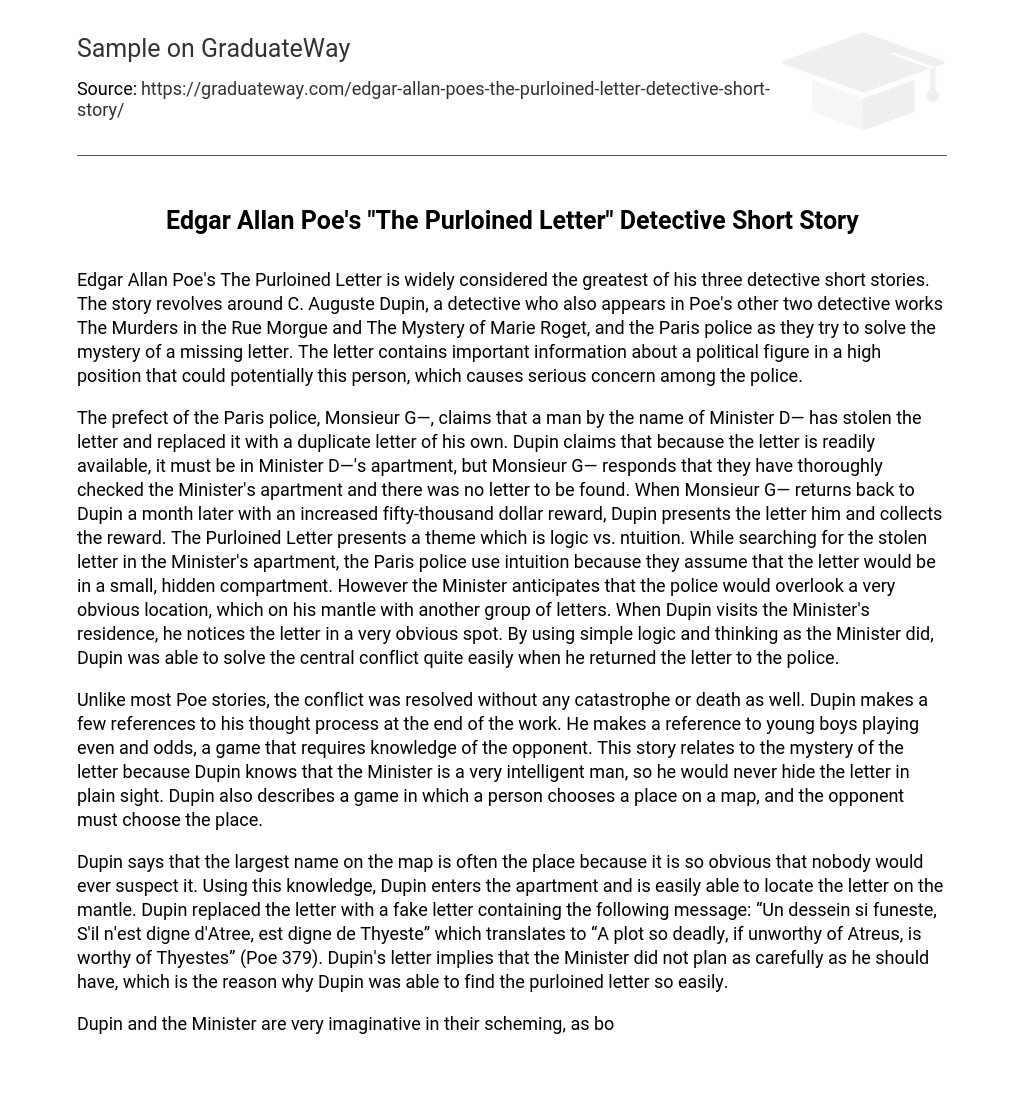The Purloined Letter by Edgar Allan Poe is often regarded as his best detective short story, featuring detective C. Auguste Dupin. Dupin also appears in Poe’s other two detective stories, The Murders in the Rue Morgue and The Mystery of Marie Roget. In this particular story, Dupin works with the Paris police in their efforts to unravel the puzzle of a letter that has gone missing. This letter holds crucial information about a prominent political figure, and its disappearance is a matter of great concern for the authorities.
The prefect of the Paris police, Monsieur G—, accuses Minister D— of stealing a letter and replacing it with a duplicate. Dupin believes that since the letter is easily accessible, it must be in Minister D—’s apartment. However, Monsieur G— counters that they thoroughly searched the Minister’s apartment and found no trace of the letter. A month later, Monsieur G— offers an increased $50,000 reward. Dupin then presents the letter to him and receives the reward. The Purloined Letter explores the conflict between logic and intuition. The Paris police rely on intuition to search for the stolen letter, assuming it would be hidden in a small compartment. However, the Minister cleverly places it in plain sight, on his mantle with other letters, anticipating that the police would overlook it. When Dupin visits the Minister’s residence, he immediately spots the letter using simple logic, solving the central conflict effortlessly and returning the letter to the police.
In contrast to the majority of Poe stories, this particular narrative diverged from the norm by resolving its conflict without any cataclysm or loss of life. At the conclusion of the work, Dupin offers insight into his thought process, alluding to a game that young boys play involving even and odds. This game necessitates an understanding of one’s adversary. The tale at hand is linked to the intrigue surrounding the mystery of the letter because Dupin is cognizant of the Minister’s exceptional intellect, thus knowing that he would not conceal the letter in plain view. Moreover, Dupin illustrates another game where an individual selects a spot on a map, with their opponent then required to choose a corresponding location.
According to Dupin, the most noticeable name on the map is often the hiding place for an object because it is so conspicuous that no one would suspect it. Using this knowledge, Dupin enters the apartment and easily locates the letter on the mantle. Dupin substitutes the letter with a counterfeit one containing the following message: “Un dessein si funeste, S’il n’est digne d’Atree, est digne de Thyeste” which translates to “A plot so deadly, if unworthy of Atreus, is worthy of Thyestes” (Poe 379). Dupin’s letter implies that the Minister did not plan as meticulously as he should have, which is why Dupin was able to effortlessly find the stolen letter.
Dupin and the Minister both exhibit great cunning in their plots by substituting the letter with duplicates. They also cleverly hide the letter in a conspicuous location to ensure it remains undetected by the authorities. The fact that Atreus and Thyestes, twin brothers from ancient Greece, are mentioned suggests a potential familial connection between Dupin and the Minister. However, it is Dupin’s superior skill in deception, demonstrated by leaving his snuffbox behind and creating a diversion outside, that enables him to outwit the Minister.





